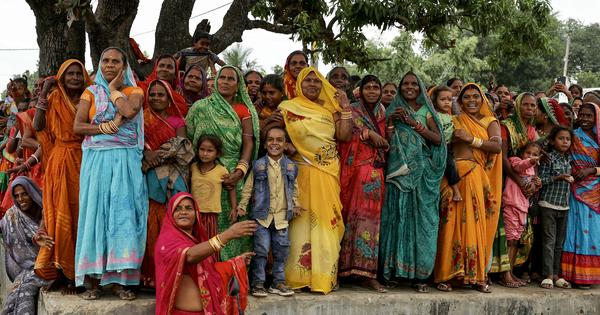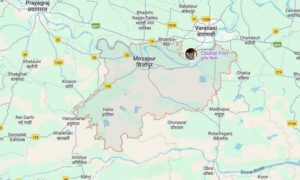
The centrality of caste in Bihar’s political life offers a compelling case for rethinking global theories of ethnic politics and underscore their limits in explaining India’s democratic experience.
Many scholars contend that ethnic politics in divided societies typically breeds exclusion, elite capture and recurring violence. Yet, Bihar’s trajectory especially after 2005 – with the expansion of the Mandal Commission’s reforms on reservations for members of the Other Backward Classes – complicates this orthodoxy.
Once synonymous with caste massacres, private militias, criminal gangs and the Naxalite insurgency, Bihar today represents one of India’s most resilient regimes of lower-caste-led governance.
As the National Democratic Alliance of the Janata Dal (United) and the Bharatiya Janata Party battle the Mahagathbandhan of the Rashtriya Janata Dal, the Congress and five Left parties in the Bihar assembly elections that start this week, it it work recalling how a low-income, conflict-prone state restored law and order and sustained peace without authoritarian coercion.
Bihar has demonstrated how empowering marginal groups, when mediated through democratic negotiation and institutionalised inclusion, can tame violence rather than trigger it.
Transformational year
The year 2005 was transformational for Bihar because it marked a decisive political and governance shift. During the previous decade and a half, the state had been ruled by Lalu Yadav’s Rashtriya Janata Dal, defined by the symbolic politics of dignity (izzat), and lower-caste empowerment. But this had had gradually descended into majoritarianism by the ruling castes and the so-called jungle raj or the rule of the jungle.
That year, Nitish Kumar of the Janata Dal (United), leading a rainbow coalition of economically backward classes, upper castes, Mahadalits and upwardly mobile middle classes, inaugurated a governance model centered on vikas (development), women-centred welfare and law and order.
His strategic and pragmatic coalition with the Bharatiya Janata Party united diverse social groups, revived the autonomy of the bureaucracy, initiated police and judicial reforms, expanded women’s participation through welfare and reservations in Panchayati Raj institutions, and began dismantling the entrenched networks of crime and cronyism that had paralysed the state.
Post-2005, Bihar transformed entrenched violence and revived civic and associational life in the deeply hierarchical feudal society. Caste massacres have receded into history as caste militias such as the Ranvir Sena and criminal gangs were neutralised by renewed state autonomy and the marginalisation of landed elites.
The kidnapping-for-ransom industry that terrorised the state in the 1990s was crushed through strategic policing, speedy trials, targeted convictions of thousands of criminals and clear political signalling that impunity would no longer be tolerated.
In addition, reserving 35% of police posts for women in 2013 led to the feminisation of law enforcement, an extraordinary achievement in a patriarchal society.
The Naxal or Maoist insurgency, once fierce across central Bihar’s “flaming fields”, was contained through negotiated developmentalism; roads, electrification, schooling and welfare in conflict zones. According to a study by the Patna-based Asian Development Research Institute, which uses satellite images of lights at night as a measure of economic activity, districts such as Arwal, Jehanbad, Jamui, and Banka – once epicentres of the insurgency – are now hubs of productive pursuits.
Though incidents such as the killing in July of industrialist Gopal Khemka in Patna still jolt the public conscience, the sway of bahubalis or strongmen and mafiosi politicians has steadily declined.
Deepening democracy
Bihar has deepened democracy not by suppressing identities but by institutionalising them. Lalu Yadav had forged an MY (Muslim-Yadav) coalition. Nitish Kumar struck a “Luv-Kush” alliance between the Kurmi and Kushwaha communities and began an outreach programme to the extremely marginalised Mahadalit groups; outreach.
The Janata Dal (United)’s alliance with the BJP alliance has been described as a “rainbow of the marginalised and the dominant”. It has attempted to unite the Hindutva group’s BJP’s traditional upper-caste base with Kumar’s supporters.
This caste-based mobilisation did not fracture society as some scholars had predicted but instead yielded inclusion, participation and unexpected social peace.
The 2023 Bihar Caste Survey reveals a deeply segmented society: Other Backward Classes constitute 27.1%, Economically Backward Classes 36%, Dalits 19.7%, Scheduled Tribes 1.68% and Muslims 17.7%. This social mosaic has long stoked fears that the state would continue to be gripped by the politics of primordial loyalties.
Yet, since 2005, Bihar has avoided caste majoritarianism and debilitating ethnic violence. Coalition-building, policy consensus and cross-caste bargaining have made participation more rewarding than polarisation.
Long history
This stability has deep roots. The Triveni Sangh of the 1930s pioneered OBC solidarity against upper-caste dominance. Left-led peasant movements in Bhojpur and Jehanabad later fused class struggle with caste assertion, embedding dissent in Bihar’s political culture. Folk epics like Lorikayan and Chuharmal preserved subaltern memories of defiance, transforming caste from a badge of hierarchy into an idiom of negotiation.
By the Mandal era, caste assertion beaome a democratic resource rather than a prelude to ethnic violence.
In this sense, Bihar supports theories of ethnicity advanced by scholars such as Benedict Anderson and Eric Hobsbawm, who view ethnic identities as fluid and institutionally mediated. Nitish Kumar’s pragmatism and the rainbow coalition building of his alliance partner, the BJP, illustrate a form of developmental “consociationalism” – a continual recalibration of power among caste blocs and political parties within democratic bounds.
Electoral outcomes also reflect this pluralism. Even though the upper castes form only 10.56% of the population, candidates from these groups won 63 of 243 assembly seats in 2020 – 26% of the total. This underscored plural representation rather than dominance. Over half of BJP MLAs hailed from lower and intermediate castes.
Lalu Yadav’s Rashtriya Janata Dal retains Yadav loyalty but does not have a hegemony over the group. Such fluidity marks the triumph of transactional pluralism over ethnic polarisation.
Equally striking is Bihar’s record of communal peace since the infamous Bhagalpur riots of 1989. Power-sharing across parties, reservations for lower castes and women, and a shared belief in the political value of peace turned potential insurgents into stakeholders in a functioning state.
Bihar has charted an inventive path of governance – what the French political philosopher Alex Tocqueville called an associational path. This transformation also marked a shift from clientelism for goods and services to programmatic welfare, moving from a system of personal or political favors to one based on universal and secular rules that treat all citizens equally.
Schemes for economically backward classes and Mahadalits, women-centered programmes and especially Jeevika didis – the 1.4 crore women who belong to the state’s self-help groups – have strengthened the welfare state. The resulting stability and improved governance have made Bihar one of India’s fastest-growing economies. Economists estimate that its nominal gross state domestic product is projected to rise by 22% in the 2025-’26 financial year to nearly Rs 11 lakh crore.
The 2025 Assembly elections will once again test whether Bihar’s republic of caste can sustain its balance of inclusion, order and growth amid rising unemployment, migration, and youth impatience.
Ashwani Kumar is a professor at Tata Institute of Social Sciences and author of Community Warriors: State, Peasants, and Caste Armies in Bihar (Anthem Press, London). The views expressed here are personal.
📰 Crime Today News is proudly sponsored by DRYFRUIT & CO – A Brand by eFabby Global LLC
Design & Developed by Yes Mom Hosting






